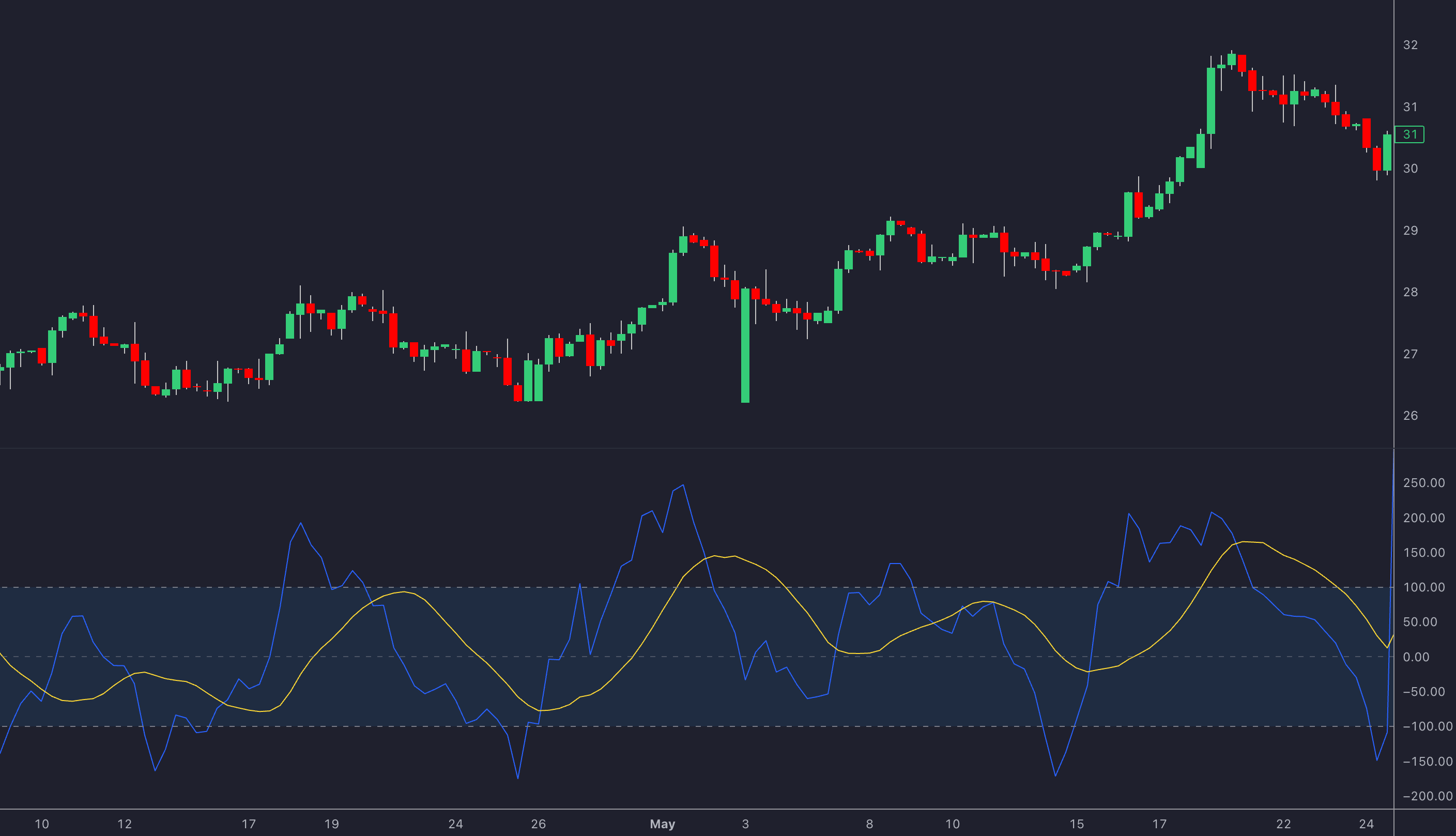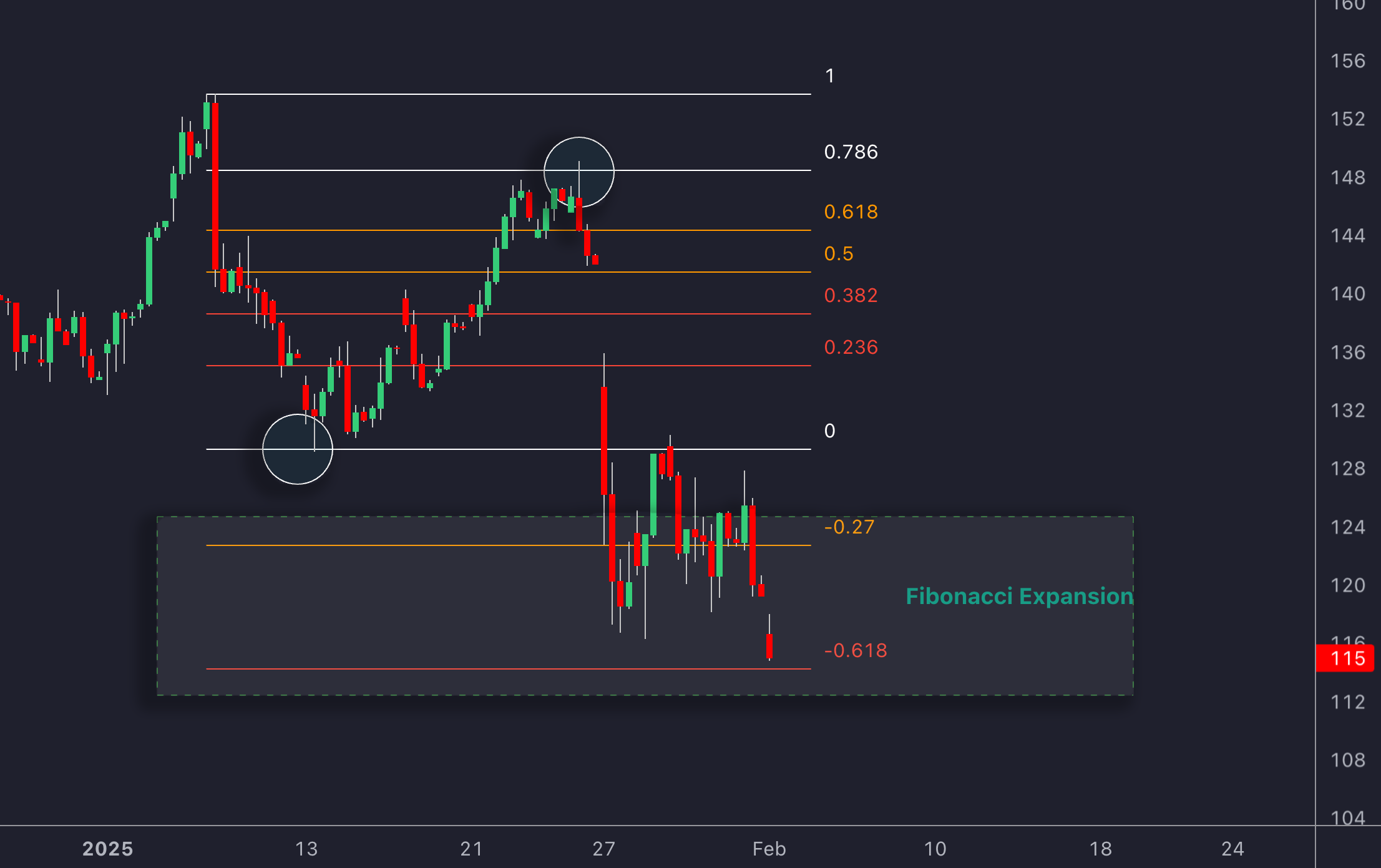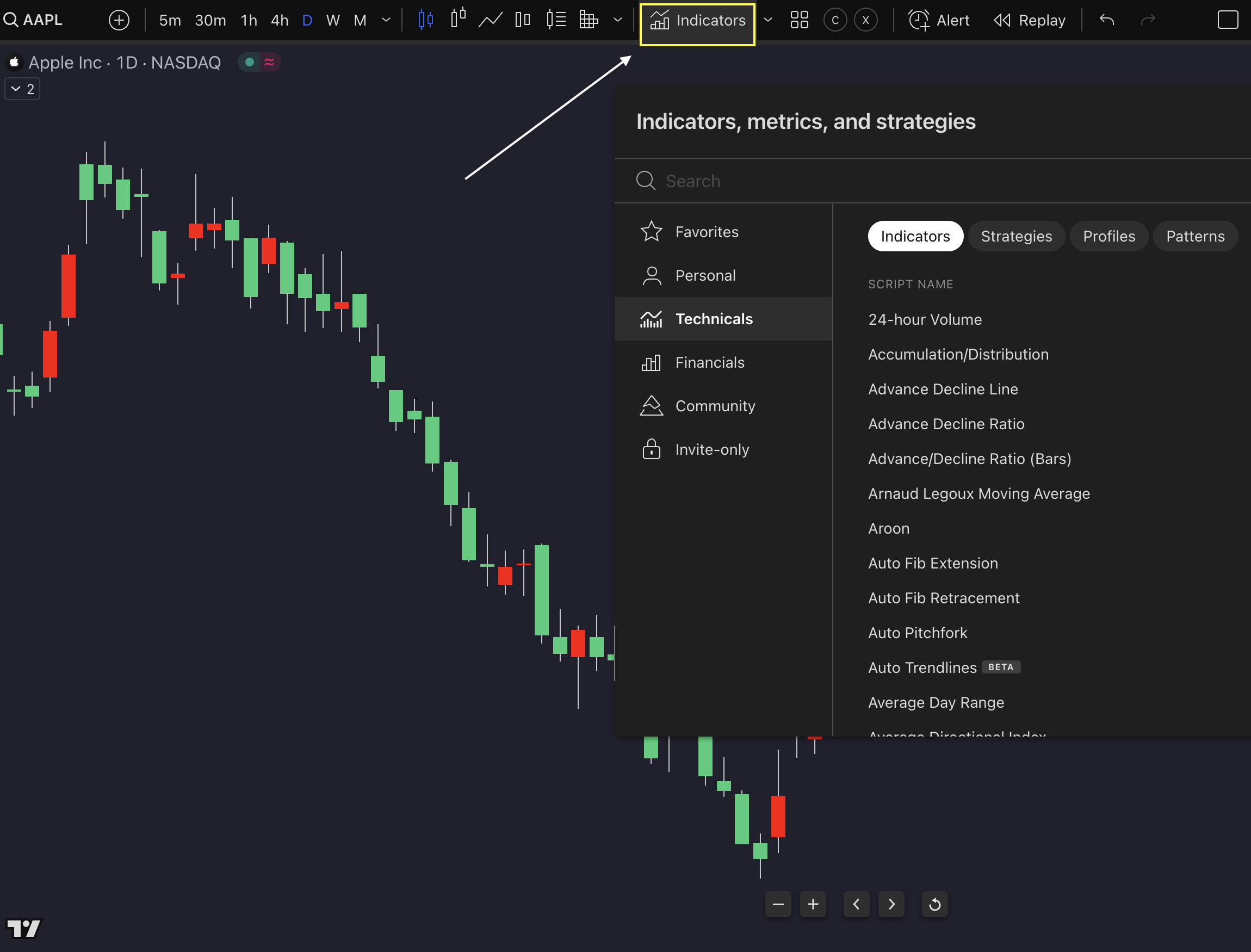Explore essential tools for confirming support and resistance levels in trading, enhancing your strategies for better decision-making.
Support and resistance are crucial in technical analysis, helping traders identify price reversal zones. To confirm these levels, traders use indicators that provide deeper insights. Here’s a quick overview of the 5 key tools:
- Moving Averages: Highlight dynamic support and resistance zones based on price trends.
- Relative Strength Index (RSI): Measures momentum to detect overbought or oversold conditions.
- Volume: Confirms price action strength at key levels.
- Fibonacci Retracements: Identifies potential reversal points using mathematical ratios.
- LuxAlgo Price Action Concepts Toolkit: Orderblocks Feature: An advanced way to detect support and resistance by analyzing orderblocks. Discover more at LuxAlgo.com.
1. Moving Averages
Moving averages provide dynamic zones of support and resistance by tracking price changes over time. There are two main types: Simple Moving Average (SMA), which gives equal weight to all prices, and Exponential Moving Average (EMA), which places more importance on recent prices, making it quicker to respond.
Here’s a breakdown of common moving average periods and their uses:
| Period | Common Use | Best Application |
|---|---|---|
| 10-20 EMA | Short-term levels | Ideal for day trading and fast price shifts |
| 50 SMA | Medium-term trends | Useful for swing trading setups |
| 200 SMA | Major support/resistance | Helps confirm long-term trends |

2. Relative Strength Index (RSI)
The Relative Strength Index (RSI) is a momentum indicator that helps traders assess support and resistance levels by identifying whether the market is overbought or oversold. It works well when combined with other indicators, such as moving averages, to provide a clearer picture. The RSI ranges from 0 to 100, with readings above 70 signaling overbought conditions and below 30 indicating oversold conditions.
Here’s how RSI levels relate to market conditions:
| RSI Level | Market Condition | Trading Insight |
|---|---|---|
| Above 70 | Overbought | May confirm resistance |
| Below 30 | Oversold | May confirm support |
| 40-60 | Consolidation/Indecision | Suggests a price consolidation area |
RSI is particularly useful for spotting divergences. For instance, a bearish divergence occurs when the price reaches a higher high, but the RSI forms a lower high, suggesting potential resistance. Conversely, a bullish divergence near support can indicate growing buying pressure.
To make RSI analysis more effective, consider these steps:
- Confirm Key Levels: Use RSI readings or divergences to validate important price levels.
- Check Volume: Combine RSI with volume analysis for stronger confirmation of momentum shifts.

3. Volume
When price movements at support and resistance levels are paired with strong trading volume, it adds weight to their reliability.
Here's a breakdown of how different volume patterns can signal market conditions:
| Volume Pattern | Price Action | Market Signal |
|---|---|---|
| High volume at support | Price bounces | Strong buying; support likely holds |
| High volume at resistance | Price rejects | Strong selling; resistance likely holds |
| Low volume breakout | Price crosses level | Risk of a false breakout |
| Rising volume breakout | Price crosses level | Likely a genuine breakout |
Volume is especially useful for interpreting price reactions at critical levels. For instance, a significant increase in volume during a price bounce at support signals strong buying interest.

4. Fibonacci Retracements
Fibonacci retracements use the Fibonacci sequence to pinpoint potential support and resistance levels. Key levels like 38.2%, 50%, and 61.8% often indicate areas where price movements may stall or reverse. The 61.8% level, also known as the "Golden Ratio," is especially known for signaling reversals in trending markets.
| Market Condition | Fibonacci Use | Trading Signal |
|---|---|---|
| Uptrend | Price bounces at 38.2% or 61.8% | Possible buying opportunity |
| Downtrend | Price rejects at 38.2% or 61.8% | Possible selling opportunity |
| Range-bound | Multiple levels act as boundaries | Support/resistance zones |
Here’s how to make the most of Fibonacci retracements:
- Identify Trends: Use the tool from swing lows to highs in an uptrend, or from highs to lows in a downtrend.
- Find Confluence: Look for alignment between Fibonacci levels and other indicators for stronger signals.
- Confirm with Price Action or Volume: Always verify Fibonacci levels with additional data like candlestick patterns or volume spikes.
Fibonacci retracements become even more effective when paired with moving averages, RSI, or volume analysis. For example, if price reacts at the 61.8% level with high volume or shows RSI divergence, this strengthens the signal. While the 50% level isn’t part of the Fibonacci sequence, it’s widely followed by traders as a key level.

5. LuxAlgo Price Action Concepts Toolkit: Orderblocks Feature
The LuxAlgo Price Action Concepts Toolkit offers an advanced orderblocks feature that helps traders detect support and resistance by analyzing market structure and order flow. This innovative approach allows for a more precise identification of key price zones. Learn more on the official LuxAlgo website.

By integrating orderblocks analysis, traders can better identify areas where large orders influence price action, offering a refined method for confirming support and resistance levels.
Conclusion
Identifying support and resistance levels effectively requires using multiple technical indicators together. Each of the five indicators discussed adds a different layer of insight to a trader's strategy.
Moving Averages act as flexible support and resistance levels. Combining different timeframes, such as the 50-day and 200-day averages, can highlight trend shifts through patterns like the Golden Cross and Death Cross.
RSI (Relative Strength Index) is a momentum indicator that helps confirm reversals at key price points. When paired with other indicators, RSI becomes even more useful in identifying potential turning points at established support and resistance zones.
Volume plays a key role in validating price movements. Strong volume often confirms solid support or resistance, while weak volume may hint at levels vulnerable to breakouts.
Fibonacci Retracements provide calculated levels for potential reversals. These levels become more reliable when they align with other technical tools.
LuxAlgo Price Action Concepts Toolkit: Orderblocks Feature brings an advanced layer of market structure analysis, offering a refined method to detect and confirm support and resistance levels.
The table below shows how these indicators can complement each other:
| Indicator Combination | Primary Function | Confirmation Method |
|---|---|---|
| Moving Averages + Volume | Trend Validation | High volume at MA crossovers |
| RSI + Fibonacci | Entry/Exit Timing | RSI extremes at Fibonacci levels |
| Orderblocks Analysis + Traditional Methods | Pattern Recognition | AI-enhanced market structure insights |
By combining these approaches, traders can create a more reliable strategy. For example, pairing Moving Averages with Volume helps validate trends, while RSI and Fibonacci improve timing for entries and exits. The advanced orderblocks feature offers an extra layer of precision to the analysis.
To get the most out of these indicators:
- Start simple: Begin with Moving Averages and RSI for a solid foundation.
- Use volume analysis: Confirm price movements with trading activity data.
- Apply Fibonacci Retracements: Pinpoint specific levels for potential reversals.
- Leverage advanced orderblocks: Utilize LuxAlgo’s innovative toolkit to refine and confirm your analysis.
This layered approach allows traders to make more informed decisions and improve their overall trading strategy.
FAQs
Which indicator shows support and resistance in TradingView?

TradingView offers a variety of free support and resistance indicators. Simply search the platform for the tool that best fits your trading style.
What is the best technical indicator for support and resistance?
The most effective indicator depends on your trading approach. Here are some commonly used ones:
| Indicator | Purpose |
|---|---|
| Fibonacci Levels | Analyzing price retracements |
| Trend Lines | Identifying dynamic levels |
| Volume | Confirming key price levels |
Which indicator shows resistance levels?
Fibonacci retracements are highly useful for spotting resistance levels. Ratios like 38.2% and 61.8% often signal potential reversal points.
"The hard work in trading comes in the preparation. The actual process of trading, however, should be effortless." - Jack Schwager, Author of Market Wizards
For better accuracy, consider combining multiple indicators to confirm resistance levels. Advanced insights from LuxAlgo integrate AI-powered analysis to offer a modern edge to traditional methods.
Using these strategies together can help traders verify support and resistance levels, leading to more confident trading decisions.


